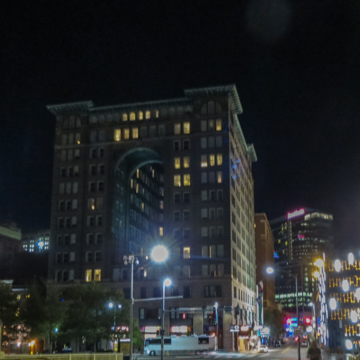You are here
Renaissance Pittsburgh Hotel
This is the sole survivor of a set of downtown skyscrapers erected by Henry Phipps, the most socially minded of Carnegie's partners, for both profit and social betterment. Grosvenor Atterbury, creator of innovative housing designs in Forest Hills, New York, was as progressive as his patron, although in Pittsburgh only this commercial tower (now a 300-room hotel) survives, and not his Pittsburgh bath houses, swimming pools, or subsidized housing. The Fulton's trademark was its seven-story-high arch fronting the Allegheny, which twenty years later also became the leitmotif for the neighboring Roberto Clemente Bridge (AL13.1). That visual homage to the riverfront—all too rare in Pittsburgh—was made complete around 1990, when trompe l'oeil painter Richard Haas added a bold mural
Writing Credits
If SAH Archipedia has been useful to you, please consider supporting it.
SAH Archipedia tells the story of the United States through its buildings, landscapes, and cities. This freely available resource empowers the public with authoritative knowledge that deepens their understanding and appreciation of the built environment. But the Society of Architectural Historians, which created SAH Archipedia with University of Virginia Press, needs your support to maintain the high-caliber research, writing, photography, cartography, editing, design, and programming that make SAH Archipedia a trusted online resource available to all who value the history of place, heritage tourism, and learning.


